Application
equipment
In this section you will find a range of practical information related to our solutions. In the articles, we share our experience, discuss implementation steps and highlight good practices. It is a reliable source of information and advice on the provision of drinking water in public spaces, the legal regulations in this area, the benefits of installing drinking water dispensers and the technological aspects in this field.
We look forward to reading!
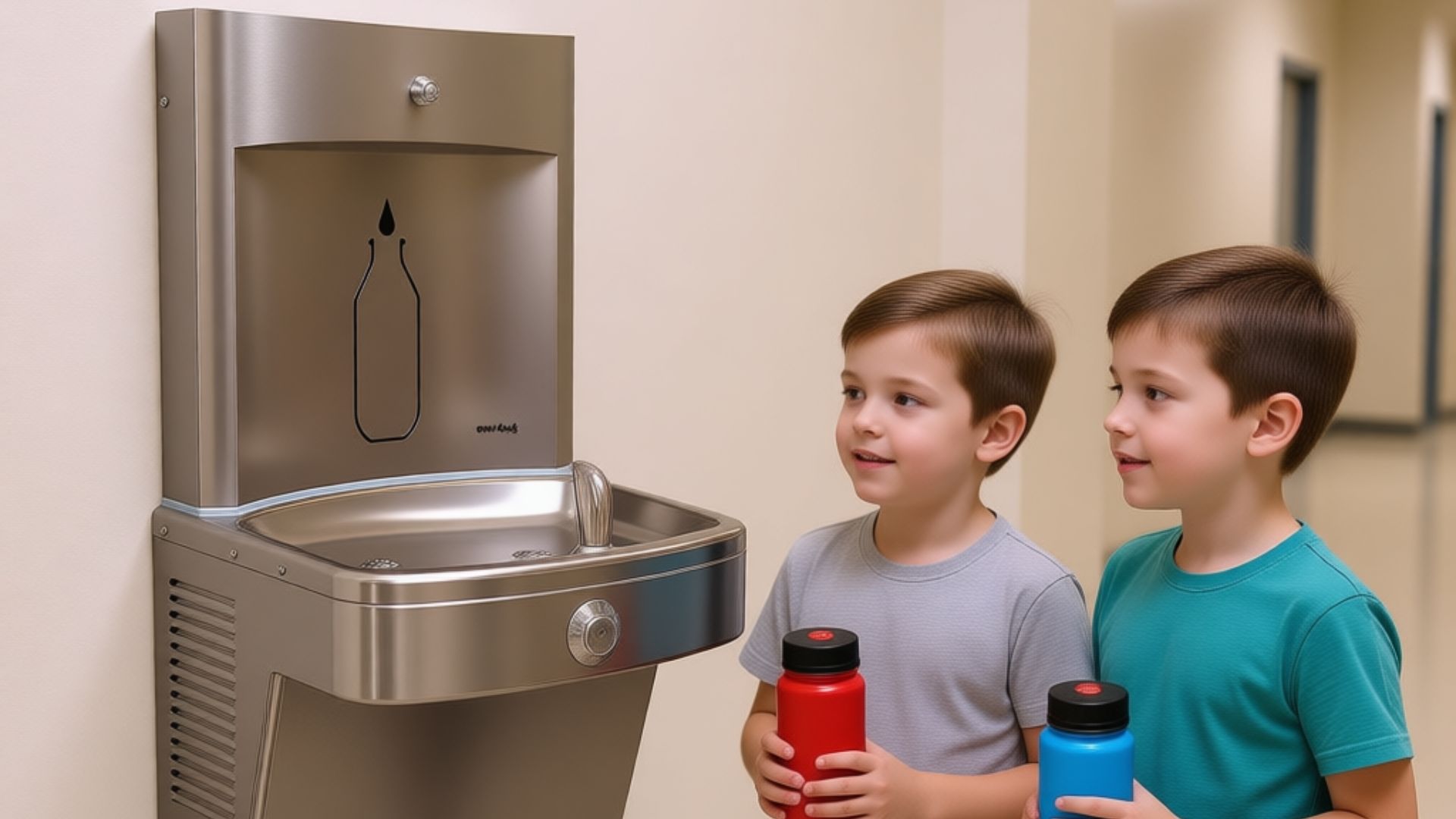
Prawidłowe nawodnienie u dzieci to temat, który z każdym rokiem zyskuje na znaczeniu — zarówno w domach, jak i w szkołach. Nasza pociechy spędzają w placówkach nawet 6–8 godzin dziennie, często w ciągłym ruchu i skupieniu. To właśnie w tym czasie organizm najbardziej potrzebuje wody, aby dobrze funkcjonować.
Nic więc dziwnego, że szkolne źródełka wody stają się coraz popularniejsze — zapewniają dzieciom łatwy, bezpieczny i higieniczny dostęp do wody przez cały dzień.
Przyjrzyjmy się, ile wody naprawdę potrzebują dzieci, dlaczego woda jest najlepszym wyborem i na co zwrócić uwagę przy wyborze źródełka do szkoły.
Zapotrzebowanie na wodę zależy od wieku, aktywności, temperatury otoczenia czy rodzaju spożywanych posiłków, ale istnieją ogólne zalecenia:
Ważne: nawet 20–30% tego zapotrzebowania pochodzi z jedzenia (np. z owoców i warzyw), ale największą część powinny stanowić napoje — przede wszystkim woda.
W sklepikach i automatach szkolnych nadal można znaleźć soki, napoje „owocowe”, herbatki smakowe czy napoje gazowane. Choć kuszą kolorami i słodkim smakiem, nie są dobrym źródłem nawodnienia.
Najczęściej zawierają:
❌ dużo cukru – nawet 8–12 łyżeczek w jednej butelce!
❌ barwniki i aromaty
❌ szkodziące zębom kwasy
❌ niekiedy kofeinę, która działa odwadniająco
Efekt?
Wahania energii, gorsza koncentracja, większa ochota na podjadanie oraz ryzyko nadwagi.
Woda pozostaje najlepszym źródłem nawodnienia — neutralna, zdrowa, bez kalorii i najlepiej gasząca pragnienie.
Źródełka w szkołach to rozwiązanie, które łączy wygodę, ekologię i zdrowie.
Oto dlaczego coraz więcej placówek decyduje się na ich montaż:
Dzieci mogą pić, kiedy chcą — bez wychodzenia z budynku i bez kupowania droższych napojów.
Gdy woda jest „pod ręką”, dzieci naturalnie sięgają po nią częściej.
Brak jednorazowych butelek to mniej plastiku i mniej odpadów.
Placówka nie musi kupować wody w galonach, a rodzice — butelek do szkoły.
Uczniowie mogą napełnić bidon w drodze na lekcję, na przerwie lub po WF-ie.

Wybór źródełka nie powinien być przypadkowy. Sprzęt musi być dopasowany do warunków szkolnych, intensywnego użytkowania i bezpieczeństwa najmłodszych.
To klucz. Źródełko powinno:
Dla dzieci liczy się przede wszystkim prostota i intuicyjne działanie.
Łatwo dostępny przycisk, odpowiednia wysokość i szybki wypływ wody ułatwiają korzystanie nawet maluchom.
Idealne źródełko powinno:
To jeden z najważniejszych elementów.
Dobre filtry redukują:
Dzieci chętniej piją wodę, która jest smaczna.
Gładkie powierzchnie, brak zakamarków, szybkie czyszczenie — to obowiązek w miejscach, gdzie z urządzenia korzystają setki uczniów dziennie.
Szkoła to miejsce intensywnego użytkowania.
Źródełko powinno być:
Dostęp do świeżej, filtrowanej wody to jedna z najprostszych i najskuteczniejszych form dbania o zdrowie i dobre samopoczucie dzieci.
Dzięki szkolnym źródełkom uczniowie piją więcej, częściej i chętniej — a to przekłada się na:
✔️ lepszą koncentrację
✔️ większą energię
✔️ zdrowsze nawyki
✔️ mniejszą ilość śmieci
Woda jest najlepszym napojem dla każdego dziecka — a dzięki nowoczesnym źródełkom picie jej staje się jeszcze łatwiejsze.
In this section you will find a range of practical information related to our solutions. In the articles, we share our experience, discuss implementation steps and highlight good practices. It is a reliable source of information and advice on the provision of drinking water in public spaces, the legal regulations in this area, the benefits of installing drinking water dispensers and the technological aspects in this field.
We look forward to reading!
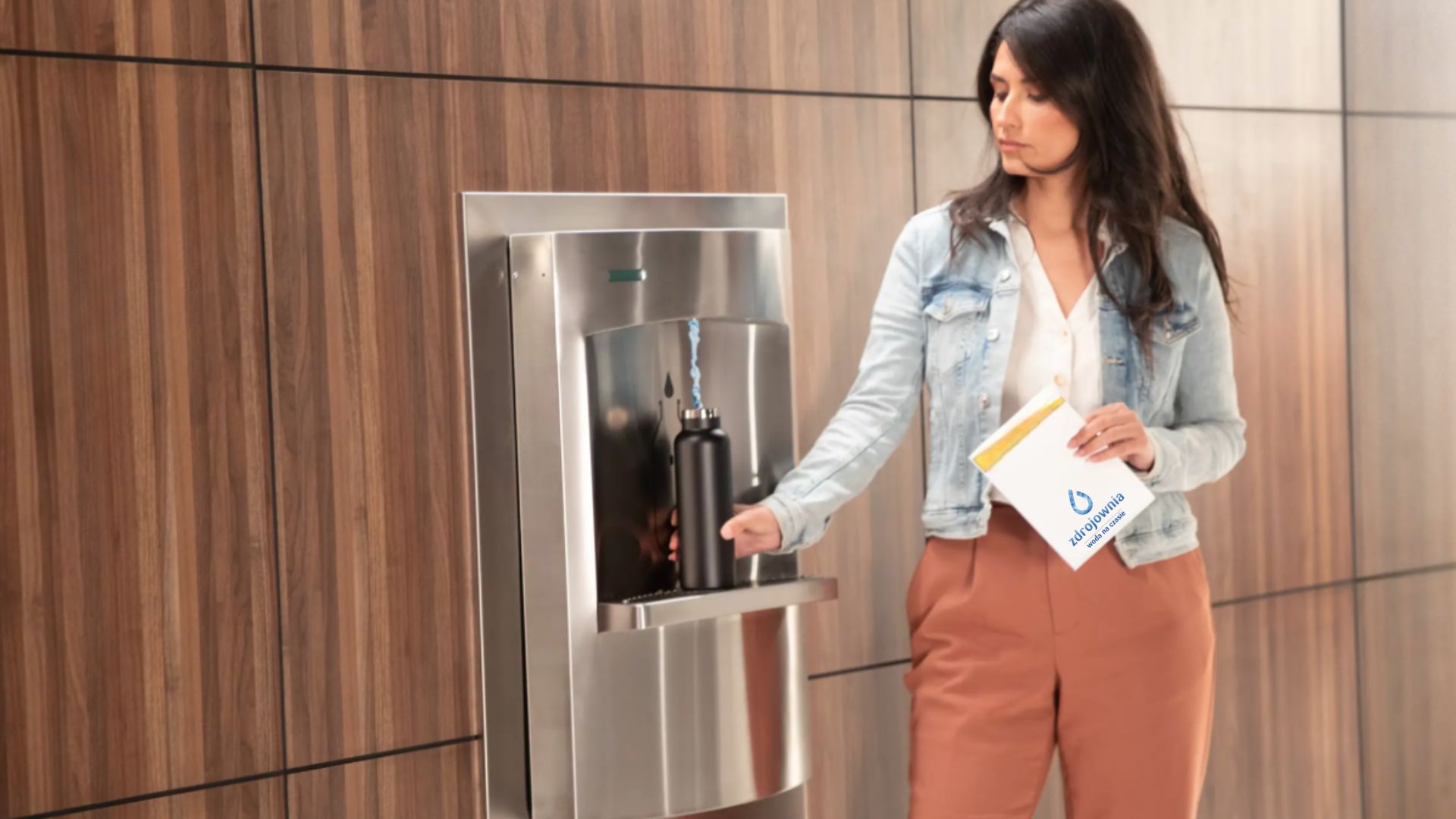
Woda z kranu od lat budzi emocje – jedni piją ją bez wahania, inni podchodzą do tematu ostrożnie, a część osób wybiera butelkowaną, mimo że wcale nie musi. Tymczasem globalne raporty i wyniki kontroli pokazują, że jakość wody wodociągowej w wielu krajach jest bardzo wysoka – nierzadko wyższa niż jakość niektórych wód sprzedawanych w plastikowych butelkach.
Dlaczego więc jedni ufają kranówce, a inni wciąż mają obawy? Jak to wygląda w Polsce? I co sprawia, że coraz więcej osób świadomie wybiera wodę prosto z sieci lub korzysta z nowoczesnych dystrybutorów? O tym w dzisiejszym artykule.
Jakość wody wodociągowej zależy przede wszystkim od lokalnej infrastruktury i standardów sanitarnych. W wielu krajach Europy Zachodniej, Ameryki Północnej czy Australii kranówka jest nie tylko bezpieczna, ale wręcz promowana jako najlepsze źródło wody pitnej.
W państwach tych woda podlega ciągłym, restrykcyjnym kontrolom, normy jakości są bardzo wysokie, proces uzdatniania jest wieloetapowy i nowoczesny.
Są jednak regiony, gdzie dostęp do bezpiecznej wody jest nadal wyzwaniem – dotyczy to głównie części Afryki, Azji oraz Ameryki Południowej. Tam picie wody prosto z kranu może być ryzykowne, a mieszkańcy korzystają z wody butelkowanej lub systemów filtracji domowej.
Wbrew obiegowym opiniom, woda kranowa w Polsce spełnia rygorystyczne normy europejskie i jest regularnie badana przez sanepid oraz zakłady wodociągowe. W wielu miastach jakość tej wody jest na poziomie porównywalnym z wodą w krajach zachodnich.
Dlaczego więc część osób nadal nie ufa kranówce?
Najczęstsze obawy to:
Co ciekawe, rośnie jednak grupa osób, które piją wodę prosto z kranu – w dużych miastach to już standard, wspierany kampaniami edukacyjnymi i inicjatywami proekologicznymi.
Powodów jest kilka – wszystkie bardzo racjonalne.
1. Oszczędność pieniędzy – Pijąc kranówkę:
2. Wygoda – Nie trzeba:
Woda jest zawsze pod ręką – czysta, świeża i dostępna w każdej chwili.
3. Ekologia i mniejsza produkcja plastiku – Każda rezygnacja z butelki PET to:
To właśnie względy ekologiczne napędzają wiele globalnych kampanii zachęcających do picia kranówki.
4. Świadomość zdrowotna – Rośnie trend odchodzenia od napojów słodzonych na rzecz wody. Społeczeństwo wie coraz więcej o:
Dla tych osób powstają nowoczesne dystrybutory i urządzenia do filtracji wody kranowej. To rozwiązania, które zapewniają pełen komfort i bezpieczeństwo, a jednocześnie wpisują się w ekologiczne trendy.
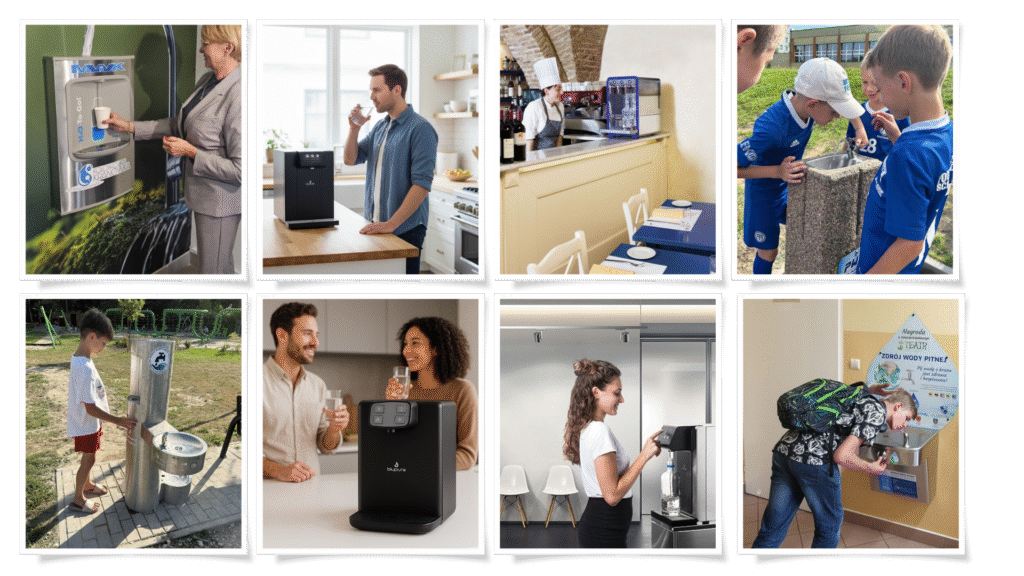
Nowoczesne dystrybutory oferują m.in.:
Co ważne – takie urządzenia sprawdzają się:
Nasza oferta obejmuje szeroki wybór dystrybutorów – od kompaktowych modeli do kuchni, po profesjonalne rozwiązania przemysłowe i instytucjonalne. Każdy znajdzie wariant dopasowany do swoich potrzeb.
✔ wygodny i stały dostęp do świeżej wody
✔ wysoka jakość dzięki filtracji i zabezpieczeniom
✔ możliwość wyboru wody gazowanej, chłodnej lub ciepłej
✔ redukcja kosztów zakupu wody butelkowanej
✔ ograniczenie plastiku i dbałość o środowisko
✔ estetyka – urządzenia pasujące do nowoczesnych wnętrz
✔ bezobsługowość i higiena dzięki systemom UV
Świat idzie w kierunku rozwiązań ekologicznych, wygodnych i ekonomicznych – a picie wody kranowej doskonale wpisuje się w te wartości.
W Polsce jakość wody z sieci wodociągowej jest bardzo dobra, świadomość rośnie, a nowoczesne urządzenia filtrujące i dystrybutory pozwalają cieszyć się:
💧 lepszym smakiem,
💧 pełnym bezpieczeństwem,
💧 wygodą,
💧 niższymi kosztami,
💧 i mniejszą produkcją plastiku.
To prosty krok, który realnie wpływa na nasze zdrowie, komfort i środowisko.
In this section you will find a range of practical information related to our solutions. In the articles, we share our experience, discuss implementation steps and highlight good practices. It is a reliable source of information and advice on the provision of drinking water in public spaces, the legal regulations in this area, the benefits of installing drinking water dispensers and the technological aspects in this field.
We look forward to reading!

Publiczne źródła wody pitnej nie są współczesnym wynalazkiem. Pierwsze instalacje pojawiły się już w XIX wieku w Ameryce Północnej, gdzie stały się jednym z filarów rozwijającej się infrastruktury miejskiej. Ich celem był łatwy dostęp mieszkańców do czystej, bieżącej wody – zarówno ze względów zdrowotnych, jak i sanitarnych.
Dziś ta idea wraca w nowoczesnej, ekologicznej odsłonie. W obliczu walki z plastikiem i rosnącej świadomości społecznej, zewnętrzne zdroje wody pitnej stają się symbolem przyszłościowych rozwiązań dla miast oraz instytucji.
Współczesne zdroje zewnętrzne czerpią z doświadczeń firm takich jak nasz amerykański partner Murdock Manufacturing – producenta z ponad 150-letnią historią w projektowaniu zdrojów i stacji wody pitnej. Mając na uwadze jego wieloletnie doświadczenie oraz bogata ofertę zdecydowaliśmy się na współpracę i po czasie zostaliśmy oficjalnym dystrybutorem Murdock Manufacturing na Europę.
Stawiamy na sprawdzone technologie i rozwiązania, zapewniając urządzenia odporne na warunki atmosferyczne, intensywne użytkowanie oraz akty wandalizmu. To połączenie doświadczenia, inżynierii i nowoczesnego designu.
Stal nierdzewna – klucz do trwałości. Najwyższej jakości zdroje powstają z stali nierdzewnej 304 lub 316, która:
Wibrobeton – solidność, o której często się nie mówi. To materiał o ponadprzeciętnej odporności, idealny do przestrzeni miejskiej. Świetnie znosi intensywne użytkowanie i działa wandaloodpornie.
Konstrukcje odporne na zniszczenia. Trwałość to nie tylko materiał — to również:

Nalewak do butelek. W dobie bidonów wielokrotnego użytku nalewak to już standard. Wygodny, szybki i higieniczny — pozwala ograniczyć zużycie jednorazowych butelek plastikowych.
Pedały nożne i bezdotykowe uruchamianie. To nie tylko wygoda, ale i wyższy poziom higieny — szczególnie ważny w przestrzeni publicznej.
Misy o różnych wysokościach. Dostosowane do:
Stacje do mycia rąk. Przydatne na placach zabaw, w parkach, przy ścieżkach rowerowych czy w pobliżu boisk.
Zdroje świetnie sprawdzają się:
To miejsca, gdzie dostęp do wody jest realną korzyścią — i użytkownicy natychmiast to doceniają.
Zewnętrzne zdroje wody pitnej to przykład, jak mała infrastruktura może realnie poprawić codzienne życie mieszkańców. Łączą wygodę, ekologię i estetykę, a dzięki materiałom takim jak stal nierdzewna czy wibrobeton są inwestycją na lata. Nic dziwnego, że coraz więcej miast, szkół i inwestorów wybiera właśnie takie rozwiązania.
In this section you will find a range of practical information related to our solutions. In the articles, we share our experience, discuss implementation steps and highlight good practices. It is a reliable source of information and advice on the provision of drinking water in public spaces, the legal regulations in this area, the benefits of installing drinking water dispensers and the technological aspects in this field.
We look forward to reading!
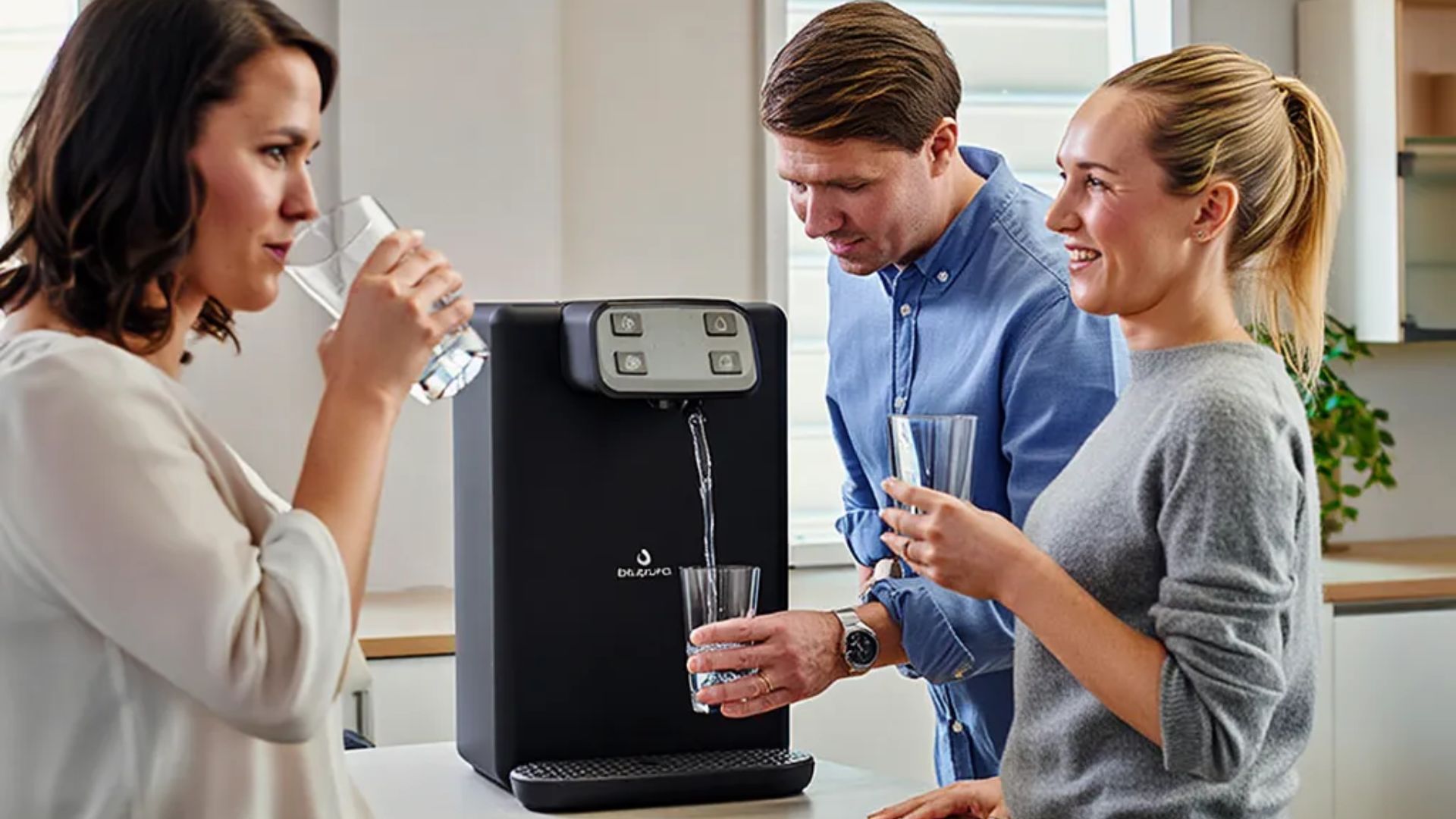
Jeszcze kilka lat temu źródełka wody pitnej w Polsce były rzadkością. Dziś coraz częściej spotykamy je w szkołach, urzędach, na uczelniach, w biurach czy przychodniach. To nowoczesne, ekologiczne i praktyczne rozwiązania, które sprawiają, że dostęp do czystej wody staje się powszechny.
Zdroje zewnętrzne idealnie sprawdzają się w parkach, przy deptakach, na rynkach miast czy placach zabaw. Korzystają z nich mieszkańcy, turyści i sportowcy. Coraz więcej samorządów uwzględnia je w swoich planach inwestycyjnych, doceniając ich zalety:
To nie tylko udogodnienie, ale też element świadomej polityki ekologicznej miast – mniej plastikowych butelek to czystsze środowisko i mniejsze koszty gospodarki odpadami.

Moda na picie wody prosto z kranu przenosi się także do domów. Coraz więcej osób szuka alternatywy dla wody butelkowanej – rozwiązania, które pozwoli im pić świeżą, smaczną wodę każdego dnia, bez dźwigania zgrzewek i bez generowania plastikowych odpadów.
Dystrybutory wody do domu to urządzenia, które filtrują, chłodzą i gazują wodę, zapewniając stały dostęp do:
Urządzenia mają kompaktową budowę – przypominają ekspresy do kawy lub eleganckie krany kuchenne, a cały system filtrujący i chłodzący można ukryć w szafce kuchennej, a cały system filtrujący, chłodzący i gazujący można ukryć w szafce pod zlewem.
Nasze dystrybutory wyposażone są w wydajne filtry, które usuwają zanieczyszczenia i poprawiają smak wody. Na życzenie klienta urządzenia mogą być doposażone w lampy UV, które działają antybakteryjnie, zapewniając maksymalny poziom higieny.
Kupowanie wody w butelkach staje się coraz droższe i mniej wygodne. Rosną ceny napojów, wprowadzany jest system kaucyjny, a do tego dochodzi konieczność noszenia ciężkich zgrzewek i zwrotu opakowań.
Co więcej, nie zawsze wiemy, w jakich warunkach woda butelkowana była przechowywana. Palety stojące na słońcu to częsty widok – a plastik pod wpływem temperatury może przenikać do wody, pogarszając jej jakość.
| Rodzaj wody | Średni koszt za 1 litr | Koszt miesięczny (dla 4-osobowej rodziny pijącej po 2 litry dziennie/os.) | Uwagi |
| Woda butelkowana (0,5–1,5 l) | ok. 1,50 zł/l | ok. 360 zł/miesiąc | Często wyższy koszt, generuje odpady plastikowe |
| Woda z kranu (bez dystrybutora) | ok. 0,004–0,01 zł/l | ok. 1–2 zł/miesiąc | Najtańsze rozwiązanie, ale bez filtracji i chłodzenia |
| Woda z dystrybutora domowego (filtr + CO₂) | ok. 0,10–0,15 zł/l | ok. 24–36 zł/miesiąc | Stały dostęp do wody filtrowanej, chłodnej i gazowanej |
Oszczędność? Nawet ponad 300 zł miesięcznie!
Do tego mniej plastiku, mniej noszenia i mniej śmieci.
Źródełka i dystrybutory wody to już nie moda, ale świadomy wybór – w trosce o zdrowie, środowisko i domowy budżet. Samorządy doceniają zalety publicznych zdrojów, a coraz więcej osób przekonuje się, że warto mieć swoje źródło czystej wody także w domu.
Niech Twoja woda będzie zawsze świeża, smaczna i dostępna na wyciągnięcie ręki – bez plastiku, bez stresu, bez kompromisów.
In this section you will find a range of practical information related to our solutions. In the articles, we share our experience, discuss implementation steps and highlight good practices. It is a reliable source of information and advice on the provision of drinking water in public spaces, the legal regulations in this area, the benefits of installing drinking water dispensers and the technological aspects in this field.
We look forward to reading!
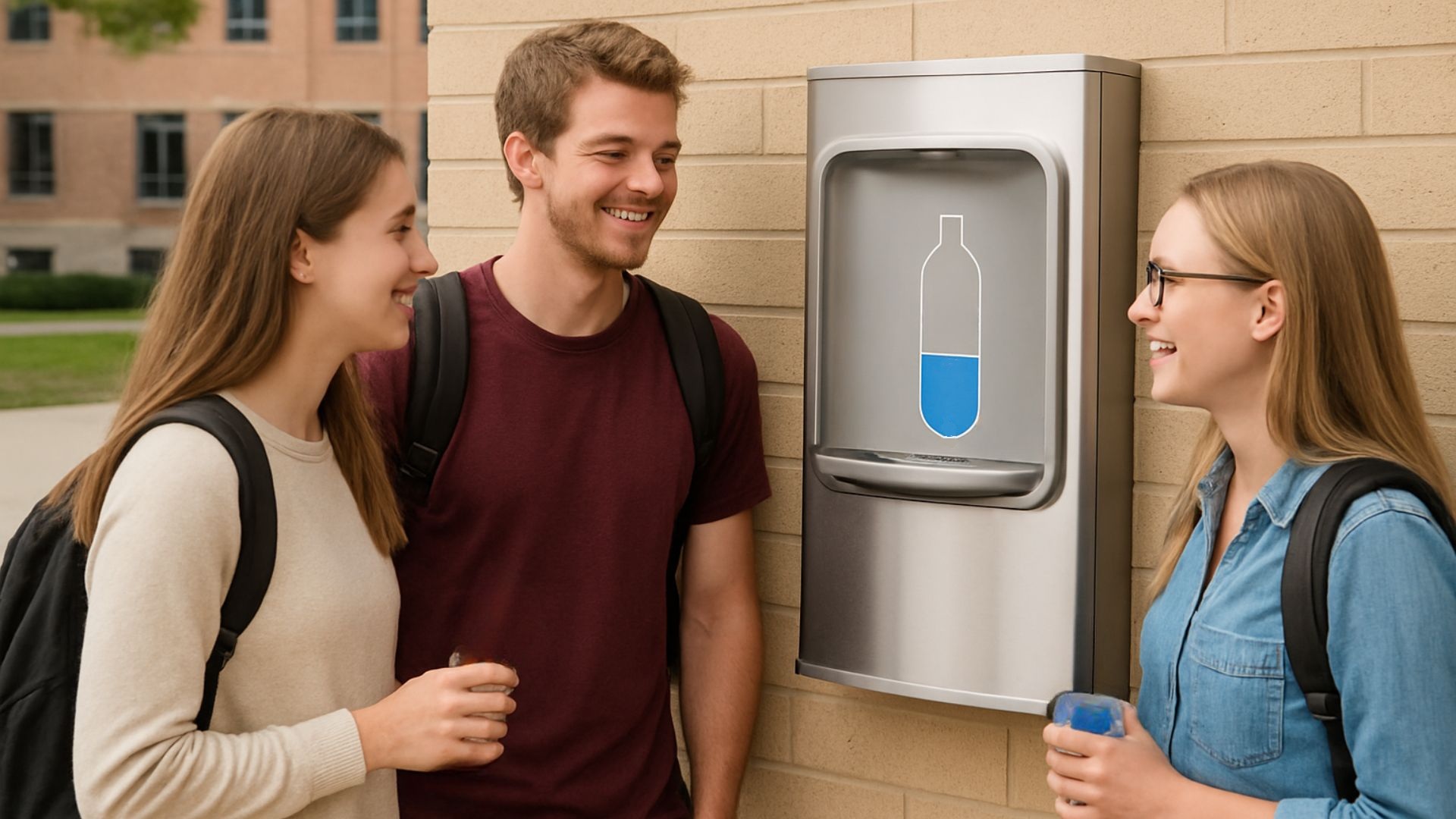
Zdrojownia zakończyła jedną z największych realizacji w swojej historii – montaż aż 48 nowoczesnych dystrybutorów wody BF15 na terenie Uniwersytetu Jagiellońskiego w Krakowie. Projekt, obejmujący wiele budynków uczelni, wymagał precyzyjnego planowania, koordynacji prac oraz współpracy z konserwatorem zabytków. Dziś społeczność akademicka może korzystać z czystej, filtrowanej wody w kilkudziesięciu punktach rozmieszczonych na terenie kampusu.
Realizacja dla Uniwersytetu Jagiellońskiego była dla naszego zespołu niemałym wyzwaniem. W ramach projektu należało zainstalować 48 dystrybutorów wody BF15 w różnych obiektach uczelni – od nowoczesnych budynków po historyczne gmachy pod opieką Konserwatora Zabytków.
Część urządzeń wymaga jeszcze finalnej akceptacji konserwatorskiej, jednak większość punktów wody jest już w pełni dostępna dla studentów i pracowników uczelni.
Zanim przystąpiliśmy do montażu, przeprowadziliśmy szczegółowe wizje lokalne. Wspólnie z przedstawicielami uczelni wytypowaliśmy najbardziej optymalne lokalizacje, biorąc pod uwagę:
Zadbaliśmy, aby dopływ wody znajdował się możliwie blisko punktu poboru – dzięki temu unikamy zastoju wody w instalacji, co mogłoby prowadzić do namnażania bakterii.
Na etapie przygotowań w naszej firmie zmontowaliśmy i przetestowaliśmy urządzenia, opracowaliśmy harmonogram oraz przygotowaliśmy sprzęt niezbędny do sprawnego montażu.

Ekipa serwisowa Zdrojowni przeprowadziła kompleksowy montaż urządzeń – od instalacji wodno-kanalizacyjnych, przez zawieszenie dystrybutorów, aż po podłączenie filtrów i lamp antybakteryjnych.
Każde urządzenie zostało przetestowane, wyczyszczone i przekazane użytkownikowi wraz z protokołem odbioru. Prace prowadzone były w czasie trwania zajęć na uczelni, dlatego nasze zespoły dbały o bezpieczeństwo i płynność ruchu w budynkach, zabezpieczając miejsca montażu i minimalizując uciążliwości.

Zamontowane urządzenia to naścienne, kompaktowe dystrybutory BF15 – nowoczesne i funkcjonalne rozwiązanie, które doskonale sprawdza się w przestrzeniach publicznych.
Najważniejsze cechy tych urządzeń to:
Dzięki tej inwestycji społeczność Uniwersytetu Jagiellońskiego zyskała nieograniczony dostęp do czystej wody pitnej, co przekłada się na komfort, zdrowie i realne oszczędności. To także mniej plastikowych odpadów i większa troska o środowisko.
Na ten moment w budynkach Uniwersytetu Jagiellońskiego działa już 30 punktów poboru wody, a po uzyskaniu wszystkich zezwoleń konserwatorskich liczba ta wzrośnie do pełnych 48 urządzeń BF15.
Projekt pokazuje, że nowoczesne technologie i dbałość o środowisko mogą iść w parze nawet w przestrzeniach o zabytkowym charakterze.
Jesteśmy dumni, że mogliśmy uczestniczyć w tym wyjątkowym przedsięwzięciu. Nasz zespół po raz kolejny udowodnił, że potrafi realizować skomplikowane instalacje w wymagających obiektach, zachowując najwyższe standardy jakości i bezpieczeństwa.
Zachęcamy szkoły, uczelnie i instytucje publiczne do inwestowania w dystrybutory oraz źródełka wody pitnej. To krok w stronę zdrowia, oszczędności i ekologicznej przyszłości.
In this section you will find a range of practical information related to our solutions. In the articles, we share our experience, discuss implementation steps and highlight good practices. It is a reliable source of information and advice on the provision of drinking water in public spaces, the legal regulations in this area, the benefits of installing drinking water dispensers and the technological aspects in this field.
We look forward to reading!
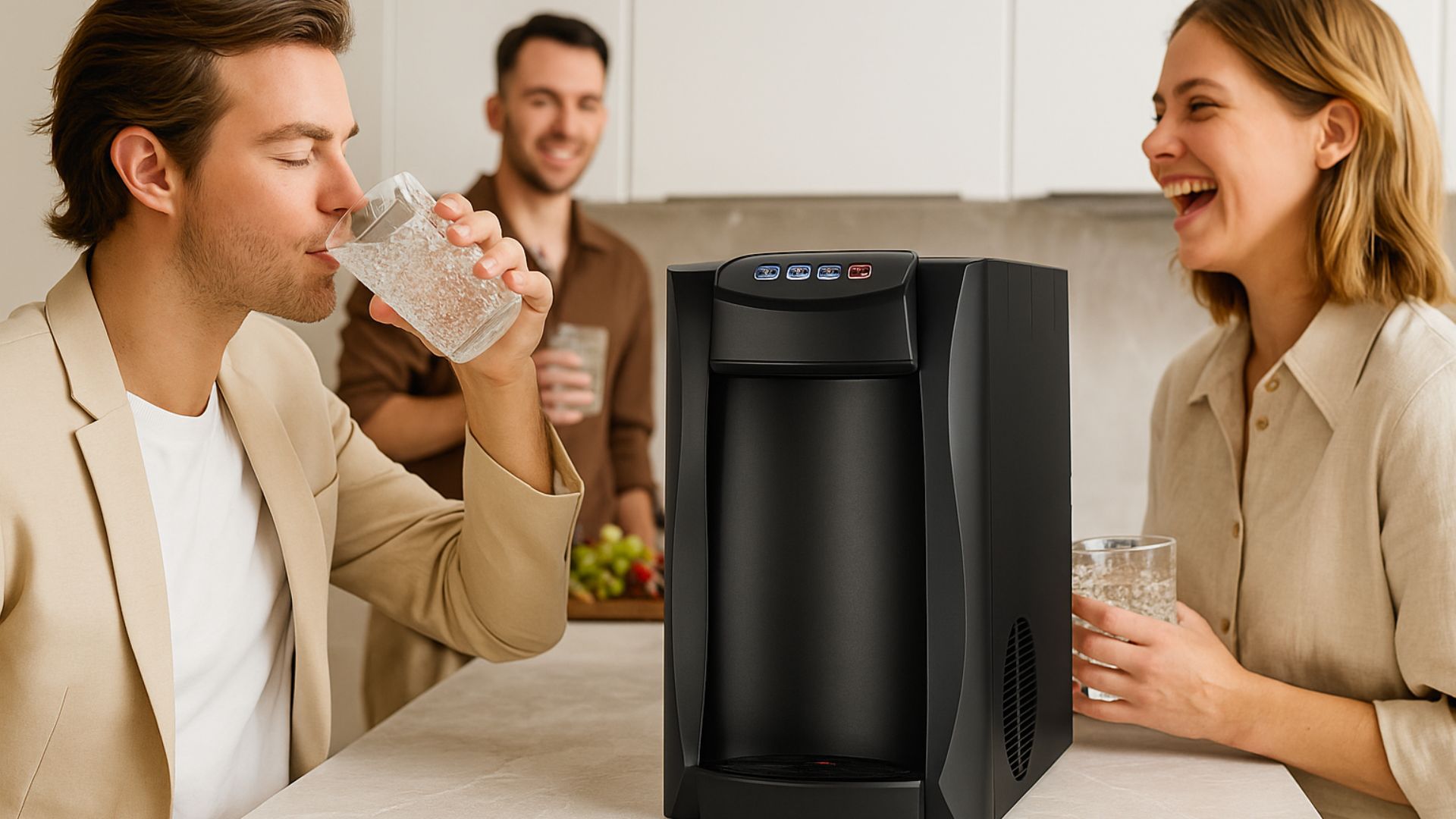
Latem picie wody przychodzi nam naturalnie – wysokie temperatury, słońce i pragnienie przypominają o tym same. Ale gdy przychodzi jesień i zima, temat nawodnienia często schodzi na drugi plan. Zimno, mniej ruchu, więcej kawy i herbaty… Tymczasem właśnie w chłodniejszych miesiącach nasz organizm równie mocno potrzebuje wody, by zachować dobrą kondycję, odporność i energię.
W chłodne dni powietrze w pomieszczeniach jest zwykle suche – ogrzewanie i klimatyzacja powodują utratę wilgoci, przez co szybciej się odwadniamy, nawet tego nie czując. Dodatkowo zimą częściej sięgamy po napoje odwadniające – kawę, czarną herbatę, kakao – które nie zastępują wody, a wręcz zwiększają jej niedobór.
Skutki? Zmęczenie, spadek koncentracji, sucha skóra, bóle głowy i osłabiona odporność. A przecież właśnie jesienią i zimą potrzebujemy organizmu w najlepszej formie, by skutecznie bronił się przed infekcjami.
Nie ma nic lepszego niż czysta woda. To najprostszy i najbardziej naturalny sposób na utrzymanie równowagi wodno-elektrolitowej. Woda:
Warto pić ją małymi łykami, ale regularnie – nie „na zapas”. Organizm najlepiej przyswaja wodę, gdy dostaje ją stopniowo, przez cały dzień.
Kluczem jest dostępność i wygoda. Gdy woda jest pod ręką – pijemy częściej i więcej. Dlatego coraz więcej firm, szkół czy urzędów decyduje się na dystrybutory wody pitnej. To rozwiązanie:
W połączeniu z ulubioną butelką lub bidonem tworzy to zestaw idealny – zawsze gotowy do uzupełnienia.
Coraz popularniejsze są bidony z podziałką czasu lub oznaczeniami ilości – dzięki nim łatwiej kontrolować, ile wody wypiliśmy w ciągu dnia. Niektóre modele mają aplikacje lub inteligentne nakrętki, które wysyłają powiadomienia o kolejnym łyku. Niby drobny gadżet, a realnie pomaga utrzymać zdrowy nawyk!

Warto pamiętać: nawodnienie to nie chwilowa moda, ale jeden z filarów dobrego samopoczucia i odporności. Regularne picie wody to lepsza koncentracja, sprawniejszy metabolizm i mniejsze ryzyko infekcji – szczególnie ważne w okresie jesienno-zimowym. Dlatego dobry dystrybutor + praktyczna butelka = codzienna gwarancja nawodnienia. Zadbaj o siebie i swój zespół – w końcu inwestycja w wodę to inwestycja w zdrowie, energię i bezpieczeństwo.
💧 ZDROJOWNIA by Topserw – bo dobre nawodnienie to podstawa bezpiecznej pracy.
In this section you will find a range of practical information related to our solutions. In the articles, we share our experience, discuss implementation steps and highlight good practices. It is a reliable source of information and advice on the provision of drinking water in public spaces, the legal regulations in this area, the benefits of installing drinking water dispensers and the technological aspects in this field.
We look forward to reading!
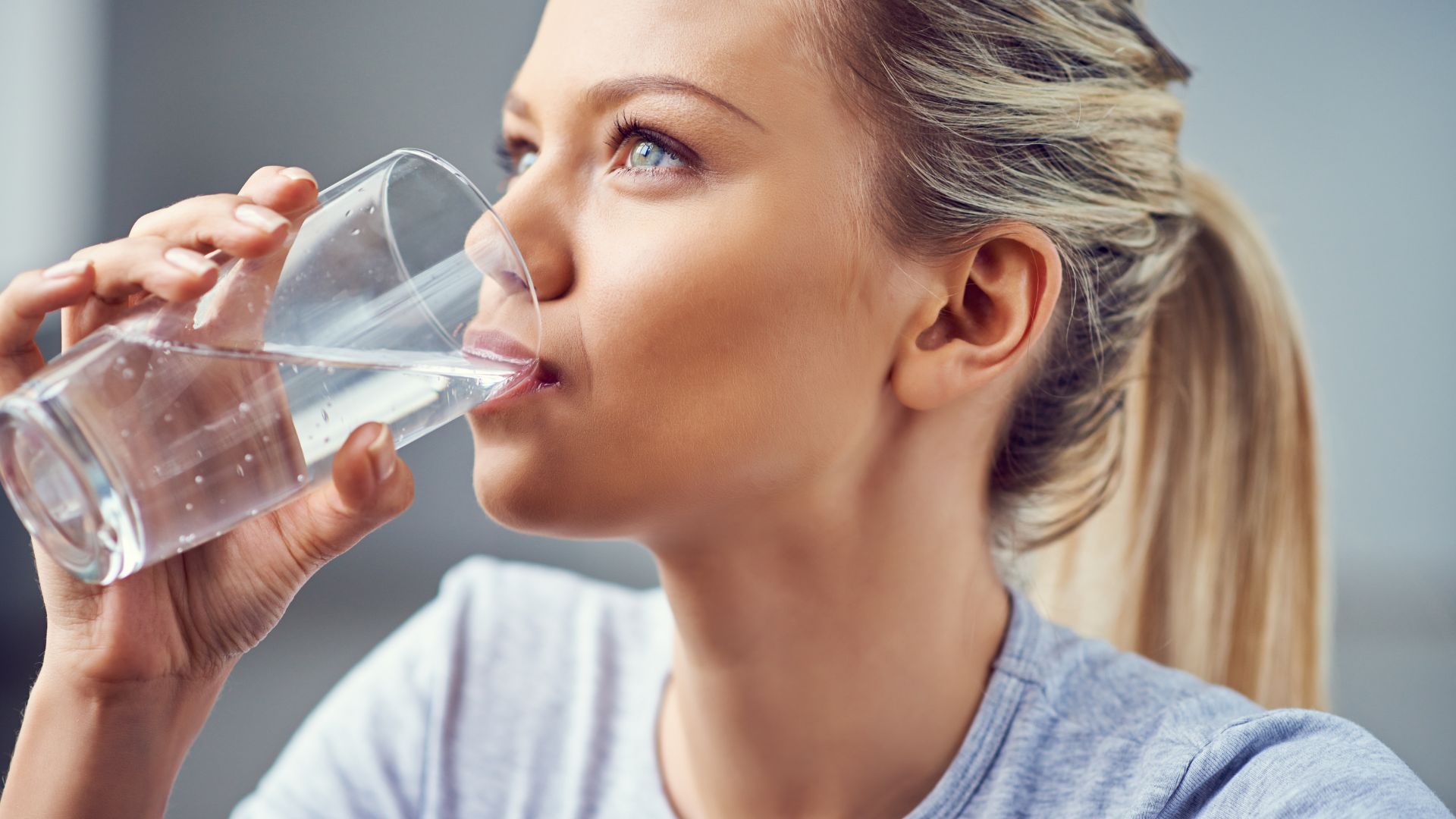
Czy zastanawiałeś się kiedyś, ile kosztuje jedna butelka wody – nie tylko w złotówkach, ale też w kosztach środowiskowych? Picie wody z kranu zamiast tej w plastikowych butelkach to prosty, ale bardzo skuteczny sposób, by ograniczyć ilość odpadów, zmniejszyć ślad węglowy i zadbać o własne zdrowie. Coraz więcej osób oraz firm odkrywa, że kranówka to nie tylko ekologiczna alternatywa, ale również wygodne i ekonomiczne rozwiązanie na co dzień.
Każdego roku Polacy zużywają miliardy plastikowych butelek. Ich produkcja, transport i utylizacja wiążą się z ogromnym obciążeniem dla środowiska. Szacuje się, że wyprodukowanie jednej półtoralitrowej butelki wody wymaga nawet trzykrotnej ilości tej samej wody – zużytej w procesie produkcji opakowania. Do tego dochodzi emisja dwutlenku węgla związana z transportem i magazynowaniem.
Woda z kranu nie wymaga plastiku ani transportu, a jej ślad węglowy jest niemal zerowy. Każdy kubek kranówki to realna oszczędność zasobów i mniej odpadów, które mogłyby trafić na wysypisko. To przykład małej, codziennej zmiany, która w skali społecznej przynosi ogromne efekty.
Coraz częściej w miejscach pracy pojawiają się tzw. bezbutlowe dystrybutory wody – urządzenia podłączone bezpośrednio do sieci wodociągowej. Takie systemy filtrują wodę, dzięki czemu jest ona czysta, świeża i pozbawiona niepożądanych zapachów. Dystrybutory bezbutlowe oferują dostęp do wody schłodzonej, gorącej lub gazowanej, bez konieczności wymiany ciężkich baniaków.
To rozwiązanie nie tylko wygodne, ale przede wszystkim ekologiczne i ekonomiczne. Eliminacja plastikowych butli oznacza brak konieczności ich transportu, przechowywania i utylizacji. To także mniej pracy logistycznej i niższe koszty eksploatacji. W praktyce to również działanie wspierające ideę gospodarki obiegu zamkniętego, w duchu wprowadzanych w Polsce rozwiązań systemu kaucyjnego. Zamiast oddawać butelki do recyklingu – po prostu nie wytwarzamy ich wcale.

Woda z sieci wodociągowej w Polsce jest bezpieczna, regularnie badana i spełnia surowe normy jakościowe określone przez Unię Europejską. Często jest równie dobra, a nawet lepsza od wody butelkowanej. Nowoczesne filtry stosowane w dystrybutorach dodatkowo poprawiają jej smak, eliminując ewentualny zapach chloru.
Warto też wspomnieć o kosztach. Litr wody z kranu kosztuje mniej niż jeden grosz, podczas gdy za tę samą ilość wody butelkowanej płacimy kilkaset razy więcej. Oszczędność jest więc nie tylko ekologiczna, ale i bardzo realna.
Zmiana przyzwyczajeń nie musi być rewolucyjna. Wystarczy zamienić butelkę plastiku na szklankę kranówki. To prosty gest, który przekłada się na czystsze środowisko, mniejsze zużycie surowców i niższe koszty. W biurze, w domu, na spotkaniach – woda z kranu jest zawsze pod ręką, świeża, bezpieczna i przyjazna dla planety.
Wybierając kranówkę zamiast wody butelkowanej:
Woda z kranu to zdrowy wybór i ekologiczna odpowiedzialność. To przykład, że prawdziwa zmiana zaczyna się od najprostszych rzeczy – od szklanki czystej, dobrej wody.
In this section you will find a range of practical information related to our solutions. In the articles, we share our experience, discuss implementation steps and highlight good practices. It is a reliable source of information and advice on the provision of drinking water in public spaces, the legal regulations in this area, the benefits of installing drinking water dispensers and the technological aspects in this field.
We look forward to reading!
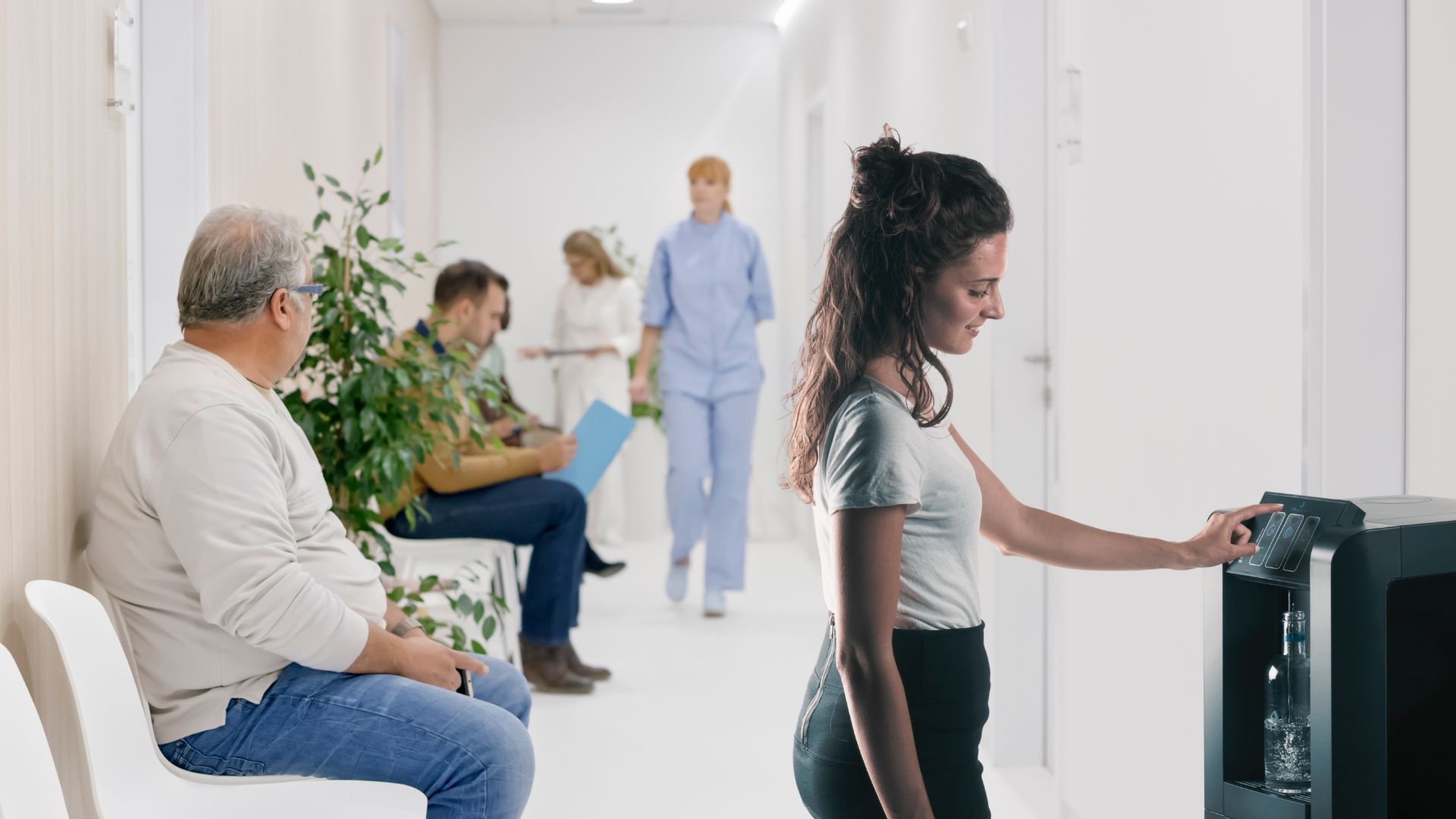
Woda to podstawa życia – szczególnie w miejscach, gdzie zdrowie człowieka jest najważniejsze. Dlatego coraz więcej placówek medycznych, takich jak przychodnie, szpitale, sanatoria czy ośrodki rehabilitacyjne, inwestuje w nowoczesne źródełka i dystrybutory wody pitnej. To rozwiązanie, które łączy wygodę, bezpieczeństwo i troskę o środowisko.
Placówki medyczne to przestrzenie, w których codziennie przebywa wiele osób – pacjentów, pracowników i odwiedzających. Dostęp do czystej, świeżej wody pitnej jest tu nie tylko kwestią komfortu, ale również zdrowia i higieny.
Dystrybutory wody w przychodniach czy szpitalach:
W środowisku medycznym ogromne znaczenie ma czystość i bezpieczeństwo mikrobiologiczne. Nowoczesne źródełka wody pitnej – takie jak te oferowane przez nas – są projektowane tak, aby spełniały rygorystyczne normy sanitarne.
To właśnie te cechy sprawiają, że dystrybutory wody są w pełni bezpiecznym rozwiązaniem nawet w przestrzeniach o podwyższonych wymaganiach higienicznych.

Źródełka wody pitnej to nie tylko funkcjonalność, ale też realna poprawa komfortu w codziennym funkcjonowaniu placówki.
Nowoczesne źródełka wody to również krok w stronę zrównoważonego rozwoju.
Dzięki nim można znacząco ograniczyć zużycie plastiku – nie ma potrzeby kupowania wody w butelkach jednorazowych. To nie tylko oszczędność, ale także realna korzyść dla środowiska.
Woda z sieci, odpowiednio przefiltrowana i schłodzona, jest nie tylko tańsza, ale też bardziej ekologiczna.
Od lat dostarczamy rozwiązania do dystrybucji wody pitnej, które spełniają najwyższe standardy jakości i higieny. Nasze urządzenia sprawdzają się w:
Każdy model jest zaprojektowany z myślą o długotrwałej, bezawaryjnej pracy i łatwej konserwacji.
Źródełka wody pitnej w placówkach medycznych to inwestycja, która przynosi korzyści wszystkim: pacjentom, personelowi i środowisku. Zapewniają bezpieczny, higieniczny i ekologiczny dostęp do wody, poprawiają komfort codziennego funkcjonowania i wzmacniają pozytywny wizerunek instytucji.
Bo troska o nawodnienie to troska o zdrowie – a właśnie ono jest w centrum misji każdej placówki medycznej.
In this section you will find a range of practical information related to our solutions. In the articles, we share our experience, discuss implementation steps and highlight good practices. It is a reliable source of information and advice on the provision of drinking water in public spaces, the legal regulations in this area, the benefits of installing drinking water dispensers and the technological aspects in this field.
We look forward to reading!
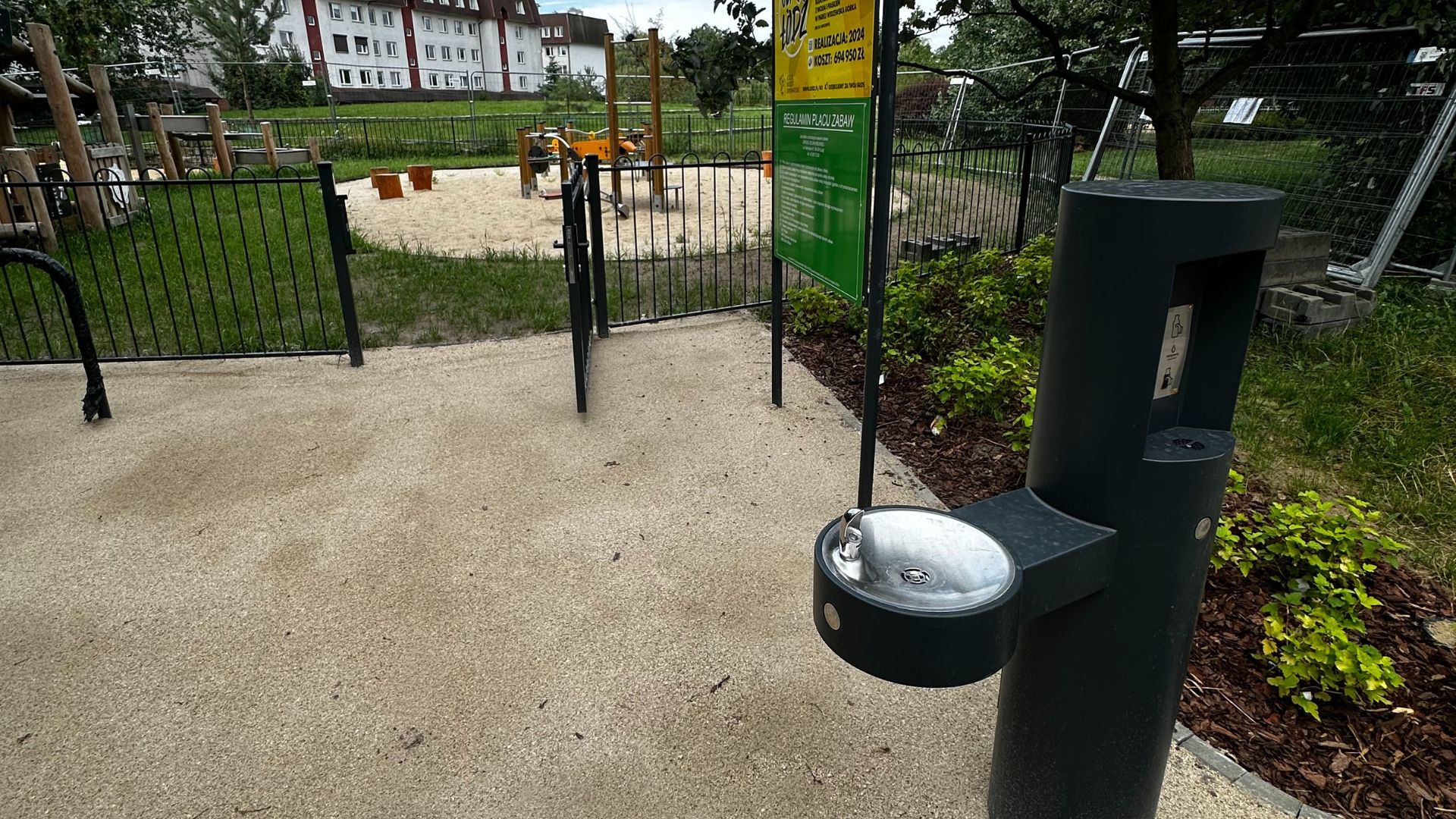
Jesień powoli ustępuje miejsca zimie, a wraz z nadejściem pierwszych mrozów kończy się sezon na korzystanie z większości zewnętrznych zdrojów wody pitnej. To naturalny moment, by odpowiednio zadbać o infrastrukturę, która latem służyła mieszkańcom i turystom. Dzięki właściwemu zabezpieczeniu zdroje będą gotowe, aby w kolejnym sezonie ponownie spełniać swoją rolę – dostarczać czystą i bezpieczną wodę w przestrzeni publicznej.
Standardowe zdroje wody pitnej wymagają przed zimą kilku prostych, ale bardzo ważnych czynności:
Takie działania zapobiegają uszkodzeniom instalacji i obudowy, a także wydłużają żywotność urządzeń. Alternatywą są zdroje mrozoodporne, dostępne również w naszej ofercie. To rozwiązanie, które może działać całorocznie, niezależnie od temperatury.
Zewnętrzne zdroje wody pitnej od lat cieszą się dużym uznaniem mieszkańców i przyjezdnych. Latem stają się miejscem, gdzie można uzupełnić bidon, napić się w upalny dzień czy nauczyć dzieci dbania o zdrowe nawyki. To także wygoda dla osób aktywnych – biegaczy, rowerzystów czy spacerowiczów.
Ale zdroje to nie tylko komfort – to także krok w stronę ekologii. Dzięki nim znacząco zmniejsza się zużycie plastikowych butelek, co wspiera lokalne działania na rzecz ochrony środowiska. Każdy litr wody nalany ze zdroju to realne ograniczenie ilości odpadów w gminie.
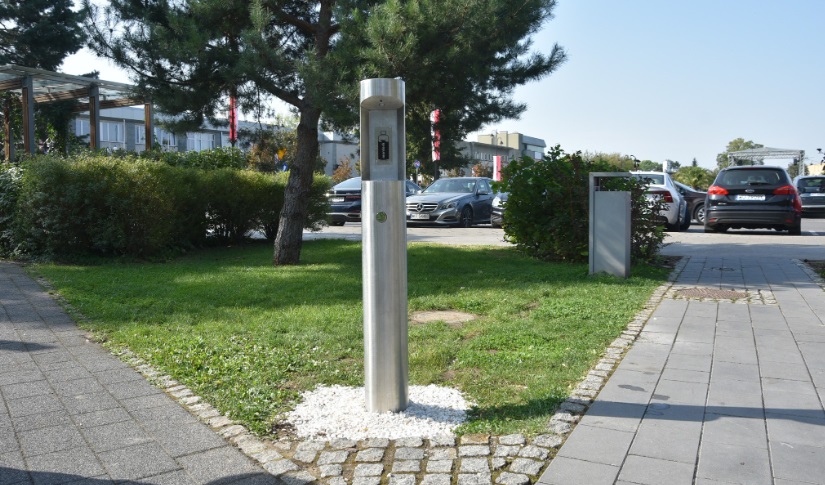
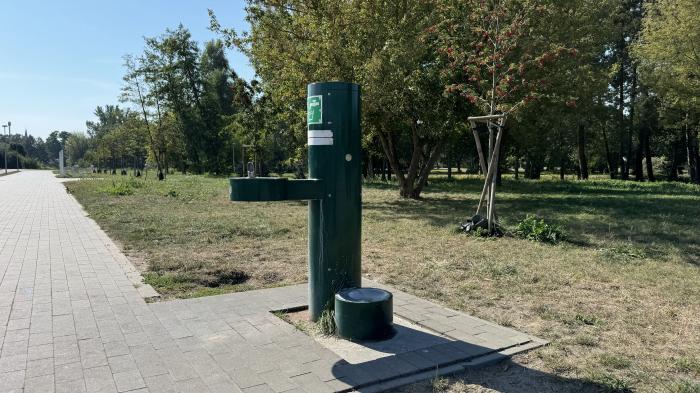
Aby zdroje dobrze spełniały swoją funkcję, powinny być odpowiednio zaprojektowane i wykonane:
Wysoka jakość wykonania i przemyślana konstrukcja sprawiają, że zdroje stają się nie tylko funkcjonalnym elementem infrastruktury, ale również estetycznym dodatkiem do przestrzeni publicznej.
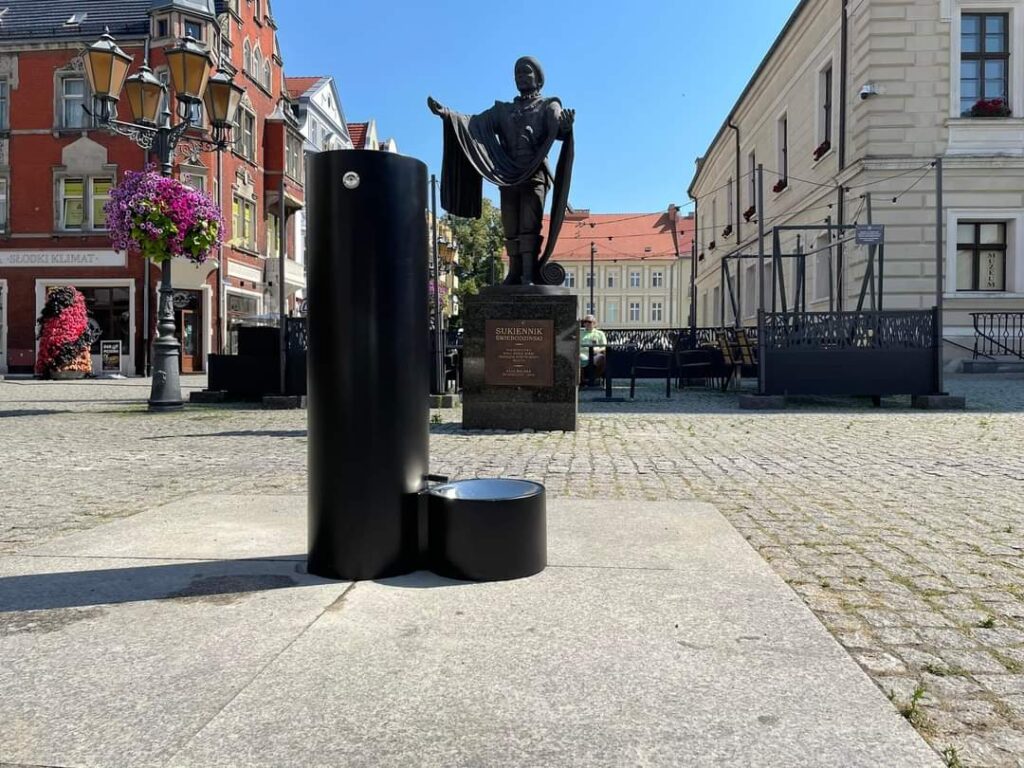
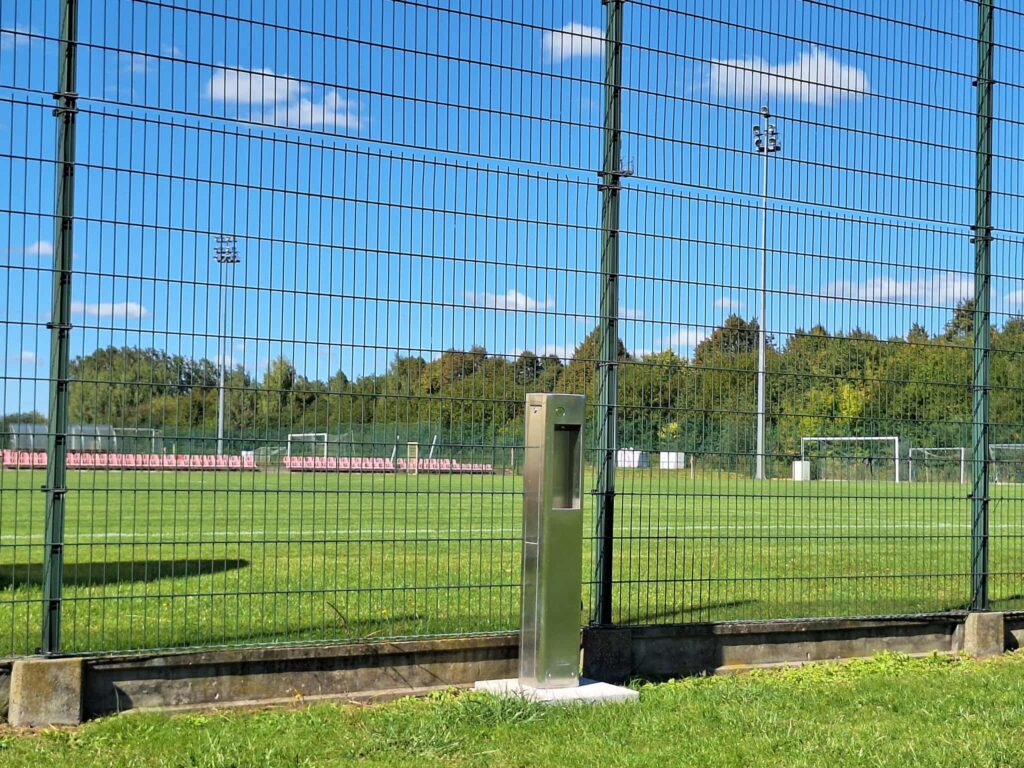
Warto pamiętać, że inwestowanie w zdroje to także sposób, w jaki samorządy mogą spełniać wymagania dyrektywy UE 2184/2020, która zobowiązuje państwa członkowskie do zwiększania dostępu mieszkańców do bezpłatnej wody pitnej. Dzięki temu gminy nie tylko realizują obowiązki prawne, ale też budują wizerunek miejsc przyjaznych, zdrowych i ekologicznych.
Choć sezon zdrojów wody pitnej dobiega końca, to właśnie teraz warto pomyśleć o ich odpowiednim zabezpieczeniu, a także planowaniu przyszłych inwestycji. Zdroje to rozwiązanie, które łączy wygodę, troskę o zdrowie mieszkańców i ekologię, a dodatkowo pomaga samorządom sprostać unijnym wymaganiom.
In this section you will find a range of practical information related to our solutions. In the articles, we share our experience, discuss implementation steps and highlight good practices. It is a reliable source of information and advice on the provision of drinking water in public spaces, the legal regulations in this area, the benefits of installing drinking water dispensers and the technological aspects in this field.
We look forward to reading!
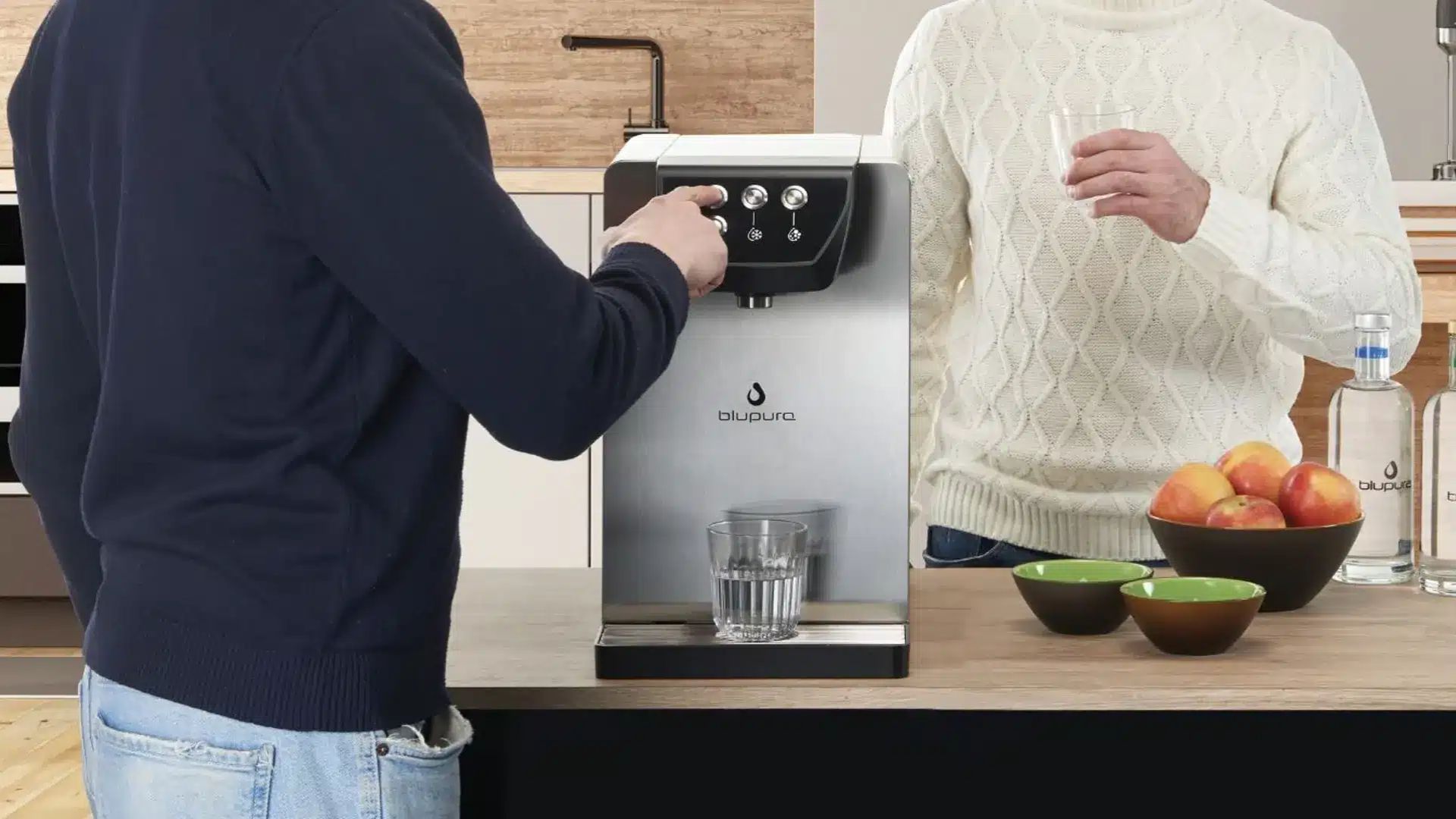
Every day we hear about the importance of drinking enough water, looking after the environment and reducing plastic. One way to combine this is to invest in a good drinking water dispenser or spring. Zdrojownia offers a range of solutions that not only provide constant access to fresh water, but also fit the needs of offices, schools, public spaces and homes. In this post, we suggest what to look for when choosing such a device and what solutions you will find in our offer
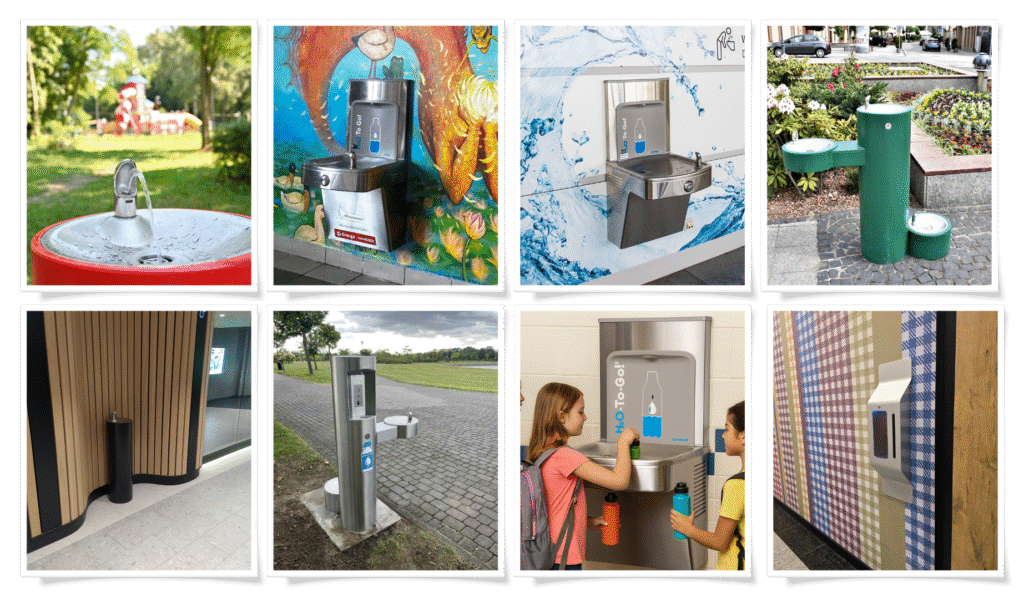
Here are some interesting models and features that may interest you:
If you are looking for a water dispenser or spring that will:
then our solutions are a very solid choice. With them, you will not only improve the comfort of yourself, your household, your employees or your guests, but you will also show that concern for health and the environment really does count.